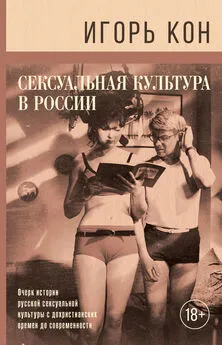Игорь Кон - Мальчик – отец мужчины
- Название:Мальчик – отец мужчины
- Автор:
- Жанр:
- Издательство:Время
- Год:2009
- Город:Москва
- ISBN:978-5-9691-0469-3
- Рейтинг:
- Избранное:Добавить в избранное
-
Отзывы:
-
Ваша оценка:
Игорь Кон - Мальчик – отец мужчины краткое содержание
Новая работа Игоря Кона развивает идеи, изложенные в его бестселлере «Мужчина в меняющемся мире». В конце XX в. человечество неожиданно обнаружило, что самым слабым звеном современного воспитания являются мальчики: они больше болеют, хуже учатся, чаще совершают преступления и рискованные поступки. Какова природа мальчишества как социокультурного явления? От чего зависят присущие или приписываемые мальчикам свойства? Всегда ли они одинаковы? Каково реальное положение мальчика в современной семье, школе и социуме? Каким он видит себя и свое тело? Как формируются и реализуются мальчишеские представления о мужественности? Каково приходится мальчикам, которые не могут или не хотят соответствовать предлагаемому нормативному канону? В каком направлении развивается современная гендерная педагогика? Обобщая данные мировых междисциплинарных исследований, ученый не дает педагогических рецептов, но его книга необходима каждому, кто готов думать над этими вопросами.
Мальчик – отец мужчины - читать онлайн бесплатно ознакомительный отрывок
Интервал:
Закладка:
Global Youth Tobacco Survey // www cdc. gov/tobaccoglob-al/GYTS/intro. Htm
Goffman E. Asylums: Essays on the social situation of mental patients and other immates. NY: Douleday, 1961.
Graber J. A. Internalizing problems during adolescence // Handbook of Adolescent Psychology. Second ed. / Ed. by R. M. Lerner, L. Steinberg. NY: Wiley, 2004. P. 587–625.
Gray J., Peng W. J., Stewarda S., Thomas S. Towards a typology of gender-related school effects: some new perspectives on a familiar problem // Oxford Review of Education. 2004. Vol. 30. P. 529–550.
Greaves L. Smoke Screen: Women's Smoking and Social Control. L.: Scarlet Press, 1996.
Greer G. The Beautiful Boy. NY: Rizzoli, 2003. Guiso L., Monte F., Sapienza P., Zingales L. Diversity: Culture, gender, and math // Science. 2008. № 320. P. 1164–1165.
Haavisto A., SouranderA., MultimakiP. et al. Factors associated with ideation and acts of deliberate self-harm among 18-year-old boys. A prospective 10-year follow-up study // J Affect Disord. 2004. Vol. 83(2–3). P. 143–154.
Halpern D. F. Sex differences in cognitive abilities. Mahwah, NJ: Erlbaum, 2000.
Halpern D. F., Benbow C. P., Geary D. C. et al. The Science of sex differences in science and mathematics // Psychological Science in the Public Interest. 2007. Vol. 8. P. 1–51.
Halpern С. Т., JoynerK., UdryJ. R., Suchindran C. Smart teens don't have sex (or kiss much either) // J Adolesc. Health. 2000. № 26(3). P. 213–225.
Hamilton A. S., Lessov-Schlaggar C. N., Cockburn M. G. et al. Gender differences in determinants of smoking initiation and persistence in California twins // Cancer Epidemiology Biomarkers amp; Prevention. 2006. Vol. 15. P. 1189–1197.
Handbook of Adolescent Psychology. 2nd ed. / Ed. by R. M. Lerner, L. Steinberg. NY: Wiley, 2004.
Handbook of Child Psychology. 6-th ed. Vol. 3. Social, Emotional and Personality Development / Volume editor N. Eisenberg. NY: Wiley, 2006.
Hank K., Kohler H. P. Gender preferences for children revisited: New evidence from Germany // Population. 2003. № 58(1). P. 133–143.
Hankin B. L., Mermelstein R., Roesch L. Sex differences in adolescent depression: Stress exposure and reactivity // Child Development. 2007. Vol. 78. P. 279–295.
Hansen E., Breivik G. Sensation seeking as a predictor of positive and negative risk behavior among adolescents // Personality and Individual Differences. 2001. Vol. 30. P. 627–640.
Hargreaves D. A., Tiggemann M. Idealized media images and adolescent body image: «comparing» boys and girls // Body Image. 2004. Vol. 1. P. 351–361.
Hargreaves D. A., Tiggemann M. 'Body image is for girls'. A qualitative study of boys' body image // Journal of Health Psychology. 2006. Vol. 11. P. 567–576.
Harris C. R., Jenkins M., Glaser D. Gender differences in risk assessment: Why do women take fewer risks than men? // Judgment and Decision Making. 2006. Vol. 1. P. 48–63.
Harter S. The self // Handbook of Child Psychology. 6-th ed. Vol. 3. NY: Wiley, 2006. P. 505–570.
HassettJ. M., SiebertE. R., Wallen K. Sex differences in rhesus monkey toy preferences parallel those of children // Hormones and Behavior. 2008. Vol. 54. P. 359–364.
Hawley P. H, Little T. D., Card N. A. The myth of the alpha male: A new look at dominance-related beliefs and behaviors among adolescent males and females // International Journal of Behavioral Development. 2008. Vol. 32. P. 76–88.
Heald S. Manhood and Morality: Sex, Violence and Ritual in Gisu Society. NY-L.: Routledge, 1999.
Hebert T. P. Gifted males // The Social and Emotional Development of Gifted Children: What Do We Know? / M. Neihart, S. M. Reis, N. M. Robinson, S. M. Moon (Eds.). Waco, TX: Prufrock Press, 2002. P. 137–144.
Hedges L. V., NowellA. Sex differences in mental scores, variability, and numbers of high-scoring individuals // Science. 1995. Vol. 269. P. 41–45.
HendrixL., Johnson G. D. Instrumental and expressive socialization: A false dichotomy // Sex Roles. 1985. Vol. 13. P. 581–595.
Hillier L. M., Morrongiello B. A. Age and gender differences in school-age children's appraisals of injury risk // Journal of Pediatric Psychology. 1998. Vol. 23. P. 229–238.
Hinduja S., PatchinJ. W. Cyberbullying: An exploratory analysis of factors related to offending and victimization // Deviant Behavior. 2008. Vol. 29. P. 129–156.
Hogbin H. J. A New Guinea childhood: From weaning till the eighth year in Wogeo // Oceania. 1946. Vol. 16. P. 275–296.
Holmila M., Raitasalo K. Gender differences in drinking: why do they still exist? // Addiction. 2005. Vol. 100. P. 1763–1769.
Houbre G. La discipline de l'amour. L'education sentimentale des filles et des garcons а Г age du romantisme. Paris: Plon, 1997.
Hsu L. L., Nevin R. L., Tobler S. K., Rubertone M. V. Trends in overweight and obesity among 18-year-old applicants to the United States military, 1993–2006 // Journal of Adolescent Health. 2007. Vol. 41. P. 610–612.
Huang J. -H., Jacobs D. F., Derevensky J. L. et al. Gambling and health risk behaviors among U. S. college student-athletes: Findings from a national study // Journal of Adolescent Health, 2007. Vol. 40. P. 390–397.
Hunt D. Parents and Children in History // Psychology of Family Life in Early Modern France. NY: Basic Books, 1970.
Hyde J. S. The gender similarities hypothesis // American Psychologist. 2005. Vol. 60. P. 580–592.
Jackson C. 'Lads' and 'Ladettes' in School: Gender and a Fear of Failure. Maidenhead: Open University Press, 2006.
Jaffee S. R., Moffitt Т. Е., CaspiA., Taylor A. Life with (or without) father: The benefits of living with two biological parents depend on the father's antisocial behavior // Child Development. 2003. Vol. 74. P. 109–126.
JakupcakM., SaltersK., GratzK. L., RoemerL. Masculinity and emotionality: an investigation of men's primary and secondary emotional responding // Sex Roles. 2003. Vol. 10. P. 111–120.
James A N., Richards H. Escaping stereotypes: educational attitudes of male alumni of single-sex and coed schools // Psychology of Men and Masculinity. 2003. Vol. 4. P. 136–148.
Janssen D. F. Boyhood Studies: A Bibliographic Exploration. Nijmegen, The Netherlands, 2005. http://www. boyhoodstud-ies. com
Janssen D. F. BOY – Linguistic Anthropological Notes // THYMOS: Journal of Boyhood Studies. Vol. 1. № 1. Spring 2007. P. 43–67.
Janey B. A., Janey N. V., Goncherova N., Savchenko V. Masculinity ideology in russian society: factor structure and validity of the multicultural masculinity ideology scale // Journal of Men's Studies. 2006. Vol. 14.
Jarvinen M., 0stergaard J. Governing adolescent drinking // Youth amp; Society. 2009. Vol. 40. P. 377–402.
Johnson J. G., WilkeA., Weber E. U. Beyond a trait view of risk taking: A domain-specific scale measuring risk perceptions, expected benefits, and perceived-risk attitudes in German-speaking populations // Polish Psychological Bulletin. 2004. Vol. 35. P. 153–163.
Juul A., Teilmann G., Scheike T. et al. Pubertal development in Danish children: Comparison of recent European and US data // International Journal of Andrology. 2006. Vol. 29. P. 247–255.
Kahn J. A., Huang В., Gillman M. W. et al. Patterns and determinants of physical activity in U. S. adolescents // Journal of Adolescent. 2008, Vol. 42. P. 369–377.
Karras R. M. Young knights under the feminine gaze // The Premodern Teenager: Youth in Society 1150–1650 / Ed by K. Eisenbichler. Toronto: Centre for Reformation and Renaissance Studies. 2002. P. 189–205.
Kehily M. J., NayakA. 'Lads and Laughter': Humour and the production of heterosexual hierarchies // Gender and Education. 1997. Vol. 9. P. 69–88.
Keiley M. K, Bates J. E., Dodge КA., Pettit G. S. A cross-domain growth analysis: Externalizing and internalizing behaviors during 8 years of childhood // Journal of Abnormal Child Psychology. 2000. Vol. 28. P. 161–179.
Keltikangas-Jarvinen L. The stability of self-concept during adolescence and early adulthood: A six-year follow-up study // J Gen Psychol. 1990. Vol. 117. P. 361–368.
Kendler КS., Jacobson КС, Gardner С. О. et al. Creating a social world: A developmental twin study of peer-group deviance // Arch Gen Psychiatry. 2007. Vol. 64. P. 958–965.
Kiell N. The Universal Experience of Adolescence. Boston: Beacon Press, 1967.
Kim Y. S., Leventhal B. L., Koh Y. -J., Boyce W. T. Bullying increased suicide risk: Prospective study of Korean adolescents // Archives of Suicide Research. 2009. Vol. 13. P. 15–30.
Kim-Cohen J., Arseneault L., Caspi A. et al. Validity of DSM-IV Conduct Disorder in 4V 2-5-year-old children: A longitudinal epidemiological study // Am J Psychiatry. 2005. Vol. 162. P. 1108–1117.
Kimmel M. Manhood in America: A Cultural History. NY: Free Press, 1996.
Kimmel M. Guyland: The Perilous World Where Boys Become Men. NY: Harper, 2008.
Kindlon D. J., Thompson M. Raising Cain: Protecting the Emotional Life of Boys. NY: Ballantine Books, 1999.
Kirk L., Burton M. Meaning and context: A study of contextual shifts in meaning of Maasai personality descriptors // American Ethnologist. 1978. Vol. 4. P. 734–764.
Kirkland S. A., Greaves L., Devichaud P. Gender differences in smoking and self-reported indicators of health // Women's Health Surveillance Report: A multidimensional look at the health of Canadian Women. BMC Women's Health. 2004. Vol. 4. P. S7-19.
Klein J. Cultural capital and high school bullies: How social inequality impacts school violence // Men and Masculinities. 2006. Vol. 9. P. 53–75.
Kling К С, Hyde J. S., Showers C. J., Buswell B. N. Gender differences in self-esteem: A meta-analysis // Psychological Bulletin. 1999. Vol. 125. P. 470–500.
Klomsten A. T., Marsh H. W., Skaalvik E. M. Adolescents' perceptions of masculine and feminine values in sport and physical education: A study of gender differences // Sex Roles. 2005. Vol. 52. P. 625–636.
Klomsten A. T., Skaalvik E. M., Espnes G. A. Physical self-concept and sports: Do gender differences still exist? // Sex Roles. 2004. Vol. 50. P. 119–127.
Klugman К A bad hair day for G. I. Joe // Girls, boys, books, toys / B. L. Clark, M. R. Higonnet (Eds.). Baltimore: Johns Hopkins University Press, 2000. P. 169–182.
Knight G. P., Guthrie I. K, Page M. C., Fabes R. A. Emotional arousal and gender differences in aggression: A meta-analysis // Aggressive Behavior. 2002. Vol. 28. P. 366–393.
Kohlberg L. A. A cognitive developmental analysis of children's sex-role concepts and attitudes // Development of Sex Differences. Stanford University Press, 1966. P. 82–172.
Kohn M. Change and Stability: A Cross-National Analysis of Social Structure and Personality. Boulder: Paradigm, 2006.
Korobov N. Ironizing masculinity: How adolescent boys negotiate hetero-normative dilemmas in conversational interaction // Journal of Men's Studies. 2005. Vol. 13. P. 225–246.
KuczynskiA. A sense of anxiety a shirt won't cover // http:// www.nytimes.com/2007/06/14/fashion/14reduction. html
Kuntsche E., Gmel G., Wicki M. et al. Disentangling gender and age effects on risky single occasion drinking during adolescence // European Journal of Public Health. 2006. Vol. 16. P. 670–675.
Читать дальшеИнтервал:
Закладка:










